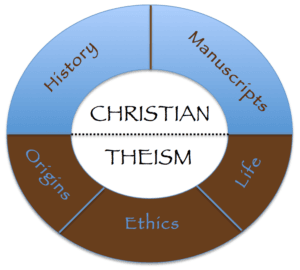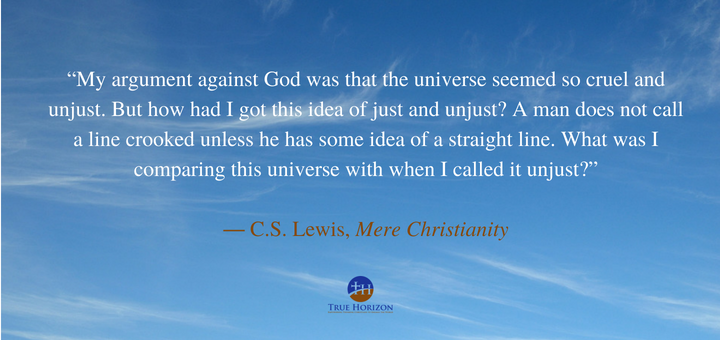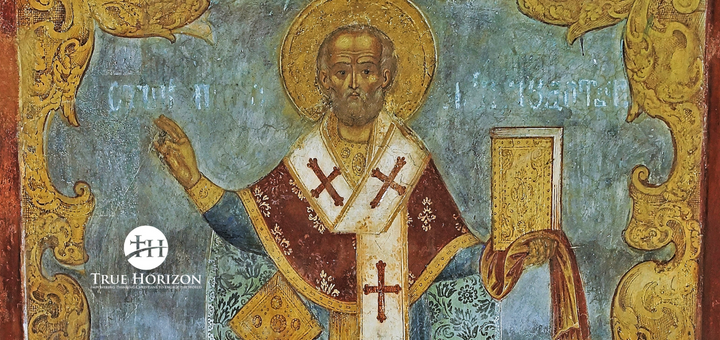A Way To Simplify The Big Picture
Being able to make the case for the truth of Christianity means you have to understand it yourself. There are plenty of resources out there that can help you do that. I always try to share the best ones I know about. But right now, I want to offer you a visual tool as a way to simplify the “big picture.” This diagram helps categorize the facts supporting Christian Theism. It’s a way to organize the evidence for Christianity in your mind’s eye.
Confident Christianity
Last year, I developed this model into a book-length summary of the evidence for Christian theism. It is available now in both paperback and Kindle formats. You can order it here:
This book doesn’t make any claims about the theological nuances that are required to understand Christianity in detail. And it doesn’t address denominational differences between Christians. It is a simple summary of the evidence for “Mere Christianity” that we find in the real world. It’s a challenge to skeptics who may have dismissed Christianity as just another blindly-followed religious myth. And it’s an easy-to-read distillation of that evidence for Christians who may never have been exposed to all of it in one place. My goal in writing this book was to provide a basic, “big picture” overview for those who may have never been exposed to apologetics.
What Is Theism?
There are many different views of God. But they fall into three basic categories:
- Pantheism — the idea that all of reality actually is God. Hinduism is an example of a pantheistic religion. Pantheism makes no distinction between God and nature. The entire physical universe is a manifestation of God. Rocks are god. Trees are god. You are god. God is not a person. God is everything.
- Deism — the idea that God is separate from the physical world but does not interact with it. God is like “The Force” in Star Wars — a powerful entity who creates the world and then steps back to watch his handiwork. There is no revelation from this God. There are no miracles. God has no further contact with his creation.
- Theism — this is a view that there is a creator God who not only forms the physical universe but also stays involved with it. Christianity, Judaism, and Islam are theistic religions.
Christianity is a theistic religion. That means we should have evidence for some kind of theistic God who is separate from, but involved in, the universe. This is a God who created, sustains and interacts with the world. Our diagram is a summary of the evidence for that kind of God.
First Things First – God Exists
I’ve summarized the case for God’s existence into three basic categories: Origins, Ethics, and Life. Here’s what I mean:
If this God exists, we must have evidence for the type of God who is a personal, moral agent. In order to create the physical universe, that God must exist outside of that universe. That means God can’t be part of the matter, energy, space, or time that makes up our world. He must be transcendent and non-physical. But it doesn’t stop there. Theism requires that God is also able to act within the universe he created.
These three foundational categories (origins, ethics, and life) contain all the evidence that explains things we know about our universe:
- It is a universe in which we all recognize that real, moral truths exist and that they are constantly being violated
- It is an actual, physical thing that came into existence sometime in the finite past
- Whatever/whoever caused the beginning of the universe could not have been a part of the physical universe itself
- It is designed to allow for, and to sustain, the existence of living things
- Some of those living things are personal beings who have moral, mental, and physical attributes
Obviously, there is a lot to each of these topics and I will provide resources to support each of them, but the takeaway is simply that our claim to believe that there is a God is not based on some kind of wishful thinking or irrational hope. It is based on evidence — concrete evidence about the way the world actually is.
Since we have evidence that there is a God and that this God’s attributes must be consistent with the evidence listed above, it follows that one of the theistic religions must be true. In order to determine which of the theistic religions is true, we need more specific information.
Specific Evidence For Christianity
The blue categories at the top of the diagram are what allow us to differentiate Christianity from the other theistic religions. Here, we look at data from archaeology and history. We can also compare the manuscript evidence from each of those religions in order to identify which of them is true. This is where the strength of the case for Christianity shines. No other religion even comes close to having the amount of evidence to support it. :
- The existence of its primary historical figure — Jesus of Nazareth
- The archaeological relics that correlate to its story from the very beginning
- A world-changing event — the Resurrection — that is central to its claims
- The number of manuscripts that verify Christianity’s authenticity and reliability
That’s the case for Christian Theism in a nutshell. We can be confident that our faith is justified, not because it makes us feel good about ourselves, or because it “works for us,” but because it is actually true!
Now for the hard part.
The Ultimate Apologetic
If you aren’t already familiar with the information above, it won’t seep into your brain through osmosis. You have to be dedicated to familiarizing yourself with it. In the posts that follow, I will give you resources — videos, articles, and books — to help fill in the details of each of these categories of evidence. But remember, you don’t have to become a biblical scholar and master every subject listed above in order to prepare yourself and those you love to use them. Remember, the purpose of True Horizon is to look at the world with a view from 35,000 feet.
You simply have to understand the basics and be willing to go find answers. In the meantime, here are some fundamental things to understand about what this all means and how to use it:
- Knowing “facts” gives you confidence to engage with others but, in the cultural climate we live in, citing facts will rarely convince others to change their minds.
- Your attitude may go further than your evidence in compelling others to consider what you’re saying.
- Asking questions is almost always more effective than making statements.
- Telling your story is vastly more interesting than regurgitating practiced arguments.
Finally, always remember that you are not meant to convince people to agree with you. That’s not your job. The Holy Spirit is the one who leads them to the truth. You are not the one who saves them. That’s Jesus’ job.
Your mission is simple: know and speak the truth. “Always be prepared to give a reason for the hope you have” (1 Peter 3:15). You are only meant to train those in your little corner of the world to be prepared to engage people in a winsome way.
That’s your “job.” And when you’ve done it, relax … and let God do His.








Indeed it is only the Holy Spirit that can open the eyes of unbelievers. He chooses to use our testimony of the Scripture, as a starting point of any conversions. All conversions are a miracle, that testifies to the power, mercy, and the love of God. Excellent article Bob. Thanks.